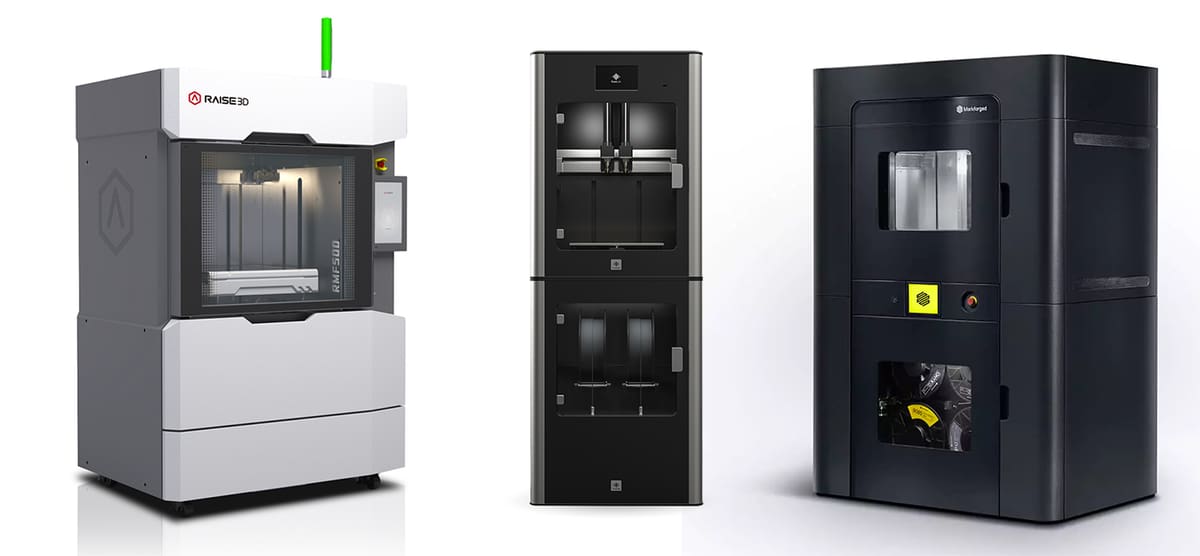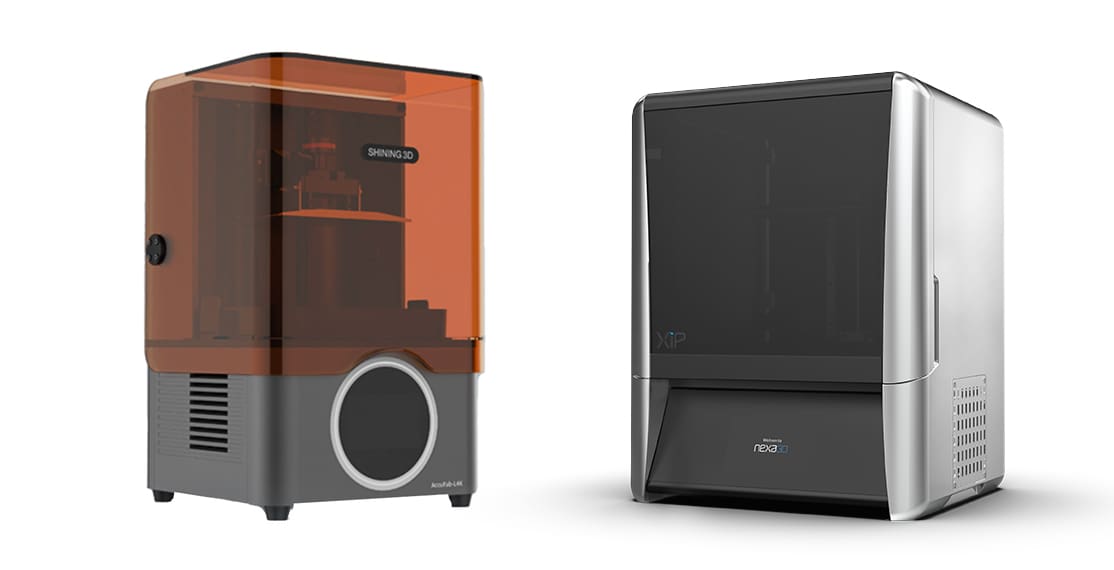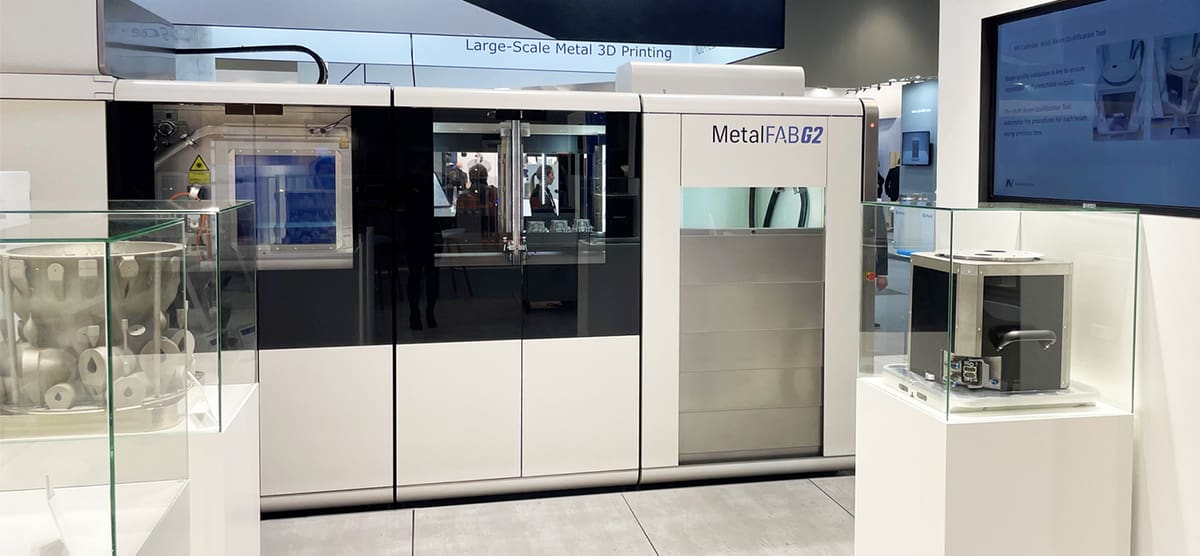If launching your new 3D printer was a competition for which company could create the most buzz at the Formnext additive manufacturing trade expo this past week, the prize could go to Markforged’s FX20, Nexa3D’s Xip, or Sinterit’s Liza X, or even the impressive 3DGence Element or the Raise3D RMF500.
However, judging from the shoulder-to-shoulder crowds pushing to get a glimpse, I’d have to say Prusa was the crowd-pleaser. Why was a consumer desktop FDM so popular? I’d venture to guess that quite a few professionals in additive manufacturing have Prusas at home. Yet, at $3,500 the new Prusa five-extruder XL is blurring the line that used to divide consumer and professional machines, especially when it comes to prototyping.
Another reason Joe Prusa and his crew were at Formnext was to announce their acquisition of professional 3D printer maker Trilab, which I’m sure we’ll be hearing more from in 2022.
From acquisitions to new materials, new software, and especially new printers, the list of those who didn’t have news at Formnext might be shorter. Below is a look at some of the most promising printer debuts, yet very few of these are currently available. They’ll be rolled out with more detail in 2022, and we’ll add them to our new printer guide here:
New FDMs Coming Soon

If there were a theme for the new FDM printers launched at Formnext 2021, it was metal. Not only did 3DGence announce its new venture into offering a metal 3D printer that uses proprietary bound powder rods, but it revealed that it would also have a debinding and sintering solution later this year to round out a full 3DGence metal production package.
Another bound metal powder filament 3D printer debut came from the Belgium-based start-up FuseLab. The company’s FL300M features independent dual extruders, an open filament system, a heated bed to 110 ºC, and a HEPA filter. With a generous 340 x 300 x 280 mm build volume, it’s clearly aimed at Markforged’s audience, but its advantage may be that it can print metal and polymers. No availability date was announced for the FL300M.
The BCN3D booth at Formnext featured a display of metal parts that can now be printed on the company Epison printers outfitted with a new “Metal Pack”, which includes a collection of accessories and metal Ultrafuse metal filament.
After metal, Formnext exhibitors offered up a collection of impressive new high-temperature FDM printers. Raise3D showed off its first foray into engineering-grade polymer processing as did Markforged, while WASP relaunched its PEEK-compatible 4070 Tech as an upgraded 4070 TX.
Large-format 3D printer manufacturer BigRep relaunched its popular Pro and One printers with new hardware, software, and material capabilities. The BigRep Pro now features a removable and flexible print bed surface that eliminates the need for glues and removal tools. Also new is an auto-calibration feature called MXT Controls System. The One now features the ability to select single, dual, or twin extruder modes plus add-ons like an enclosed housing and you can even pick the printer’s color.
New SLAs Coming Soon

The big news in resin printers was the desktop machine now available from Nexa3D. Known for larger-volume industrial machines popular in the dental market, Nexa3D said the new, smaller Xip was developed in response to customer demand from companies priced out of the larger machines and those who want a smaller version of the Nexa3D technology for the prototype lab, while having the larger printers on the shop floor.
Creating a buzz at Formnext for a new take on resin technology was the start-up Axtra3D, founded by Gianni Zitelli who was a co-founder of Nexa3D. The company’s Lumina 3D printer combines resin technologies so the core of a part is printed quickly with DLP while the outer shell is printed with finer detail using SLA. The Lumina is still in beta testing.
Not to be overlooked, Shining 3D added to its lineup of SLA printers with the new AccuFab-L4K.
New SLSs Coming Soon

Judging by the new SLS printers debuting at Formnext, the technology is getting faster as it chases the volume-production promise land.
Although Sinterit made a splash with its newest addition to the Lisa line of compact SLS printers, the Lisa X, printers on the industrial scale were equally impressive. 3D Systems’ new SLS 380 is designed “for those who want to take the next step in integrating additive manufacturing into their factory-floor ecosystem,” the company says. Bringing new technology to the quest for truly uniform and repeatable batch processing, the SLS 380 offers eight separately calibrated heaters, together with an integrated high-resolution infrared camera that captures more than 100,000 thermal data samples from within the build chamber per second.
The new Nexa3D QLS 350 is the company’s first SLS printer but keeps with the company’s overall quest for speed in additive manufacturing. The QLS 350 boasts an eight-liter per hour build rate – more than twice that of the 3D Systems – in an open-material platform.
New Metal Printers Coming Soon

Massive metal 3D printing systems are the giants of the show every year and attendees marvel at the 3D printed heat exchangers, manifolds, and other tools and spare parts on display. This year, the more familiar names launched new printers.
Xact Metal wants to bring 3D printing to a wider audience with its flexible XM200G series available in a choice of single and dual fiber laser powers. Additive Industries is chasing production with a new MetalFABG2 that it says offers “double productivity compared to previous models.” Scant details are available currently so you can expect a late 2022 rollout of this new machine.
The new printers from 3D Systems, the DMP Flex 350 Dual and DMP Factory 350 Dual, offer all the bells and whistles you know from 3D Systems but are about 50% faster the company says.
Look for more new printer details as they become commercially available. If you missed some of the other great machines introduced this year, check out our coverage of everything launched in 2021 here:
License: The text of "Top 3D Printers Launched at Formnext 2021" by All3DP Pro is licensed under a Creative Commons Attribution 4.0 International License.

